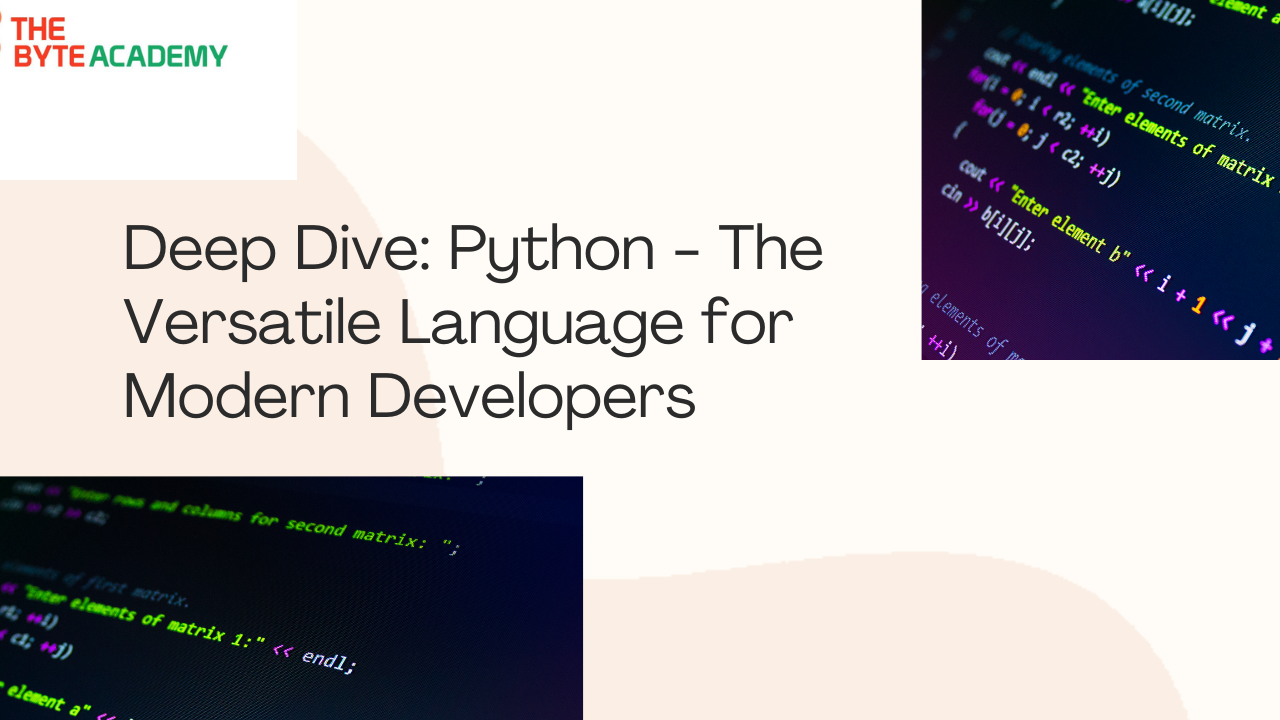Introduction
Python, with its clean syntax and readability, has surged in popularity across various domains. From web development to data science, machine learning, and automation, Python’s versatility makes it a compelling choice for developers at all levels. In this deep dive, we’ll explore the core features, strengths, and best practices of Python to help you harness its full potential.
Core Features and Strengths
- Readability: Python’s emphasis on clear and concise code enhances maintainability and collaboration.
- Interpreted Language: Python’s interpreted nature accelerates development and debugging.
- Rich Standard Library: Python offers a vast collection of modules for tasks like file I/O, network programming, and data manipulation.
- Dynamic Typing: Python’s flexibility in data types promotes rapid development.
- Object-Oriented Programming (OOP): Python supports OOP paradigms for building complex applications.
- Cross-Platform Compatibility: Python runs seamlessly on Windows, macOS, and Linux.
Python for Web Development
- Django and Flask: Explore these popular frameworks for building robust web applications.
- RESTful APIs: Learn to create efficient APIs using Python.
- Web Scraping: Extract data from websites using libraries like Beautiful Soup.
Python for Data Science and Machine Learning
- NumPy and Pandas: Master these libraries for numerical computations and data manipulation.
- Matplotlib and Seaborn: Visualize data effectively.
- Scikit-learn: Build machine learning models for various tasks.
- TensorFlow and PyTorch: Dive into deep learning with these powerful frameworks.
Python for Automation
- Automate Repetitive Tasks: Discover how to streamline workflows using Python scripts.
- GUI Automation: Control desktop applications with libraries like PyAutoGUI.
- Web Automation: Automate browser interactions with Selenium.
Best Practices for Python Development
- Code Style and Formatting: Adhere to PEP 8 guidelines for clean code.
- Testing: Write comprehensive unit and integration tests.
- Version Control: Use Git for efficient project management.
- Virtual Environments: Isolate project dependencies.
- Code Optimization: Identify performance bottlenecks and optimize code.
Conclusion
Python’s versatility and growing ecosystem make it an invaluable tool for modern developers. By mastering its core features, exploring different domains, and following best practices, you can unlock its full potential and build exceptional applications.
Additional Tips:
- Practice Regularly: Consistent coding practice is key to improvement.
- Contribute to Open Source: Enhance your skills and give back to the community.
- Stay Updated: Keep up with the latest Python trends and libraries.
- Build Projects: Apply your knowledge to real-world projects.


